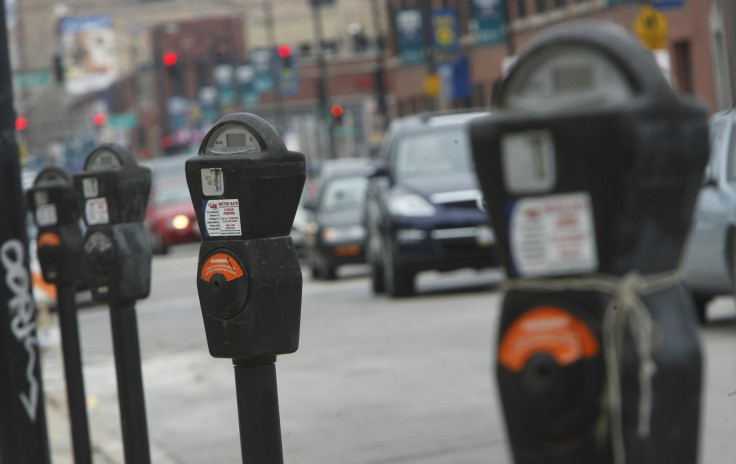What Can Trump Learn From Local Governments? How Not To Handle Infrastructure

Public-private partnerships are frequently portrayed, especially by President Donald Trump, as an easy infrastructure fix for cities and states with tight budgets. But horror stories of so-called “P3s” gone wrong have been making headlines for the past decade, often as a result of contractual clauses that prove costly for governments or keep information from the public eye. They don’t have to be that way.
The U.S. is just beginning to catch up to many of its fellow developed nations in its use of P3s to finance infrastructure, and with $4.6 trillion in construction needs on the table and a White House that’s fully embraced such financing, that trend is sure to pick up. Below are five examples of P3 contracts that drew public ire, and how future dealmakers can avoid such pitfalls.
In Virginia, The State Government Couldn’t Compete With Its Private Partner
As part of its deal with the state of Virginia, Elizabeth River Crossings OpCo LLC — a consortium led by Sydney-based investor Macquarie Group and the Swedish firm Skanska A.B., along with American construction firms Weeks Marine Inc. and Kiewit Construction Co. — received contractual assurance that its toll income would maintain some stability over the course of the 58-year agreement.
Although the frequently-asked-questions section of the ERC’s site says “there is no guaranteed compensation” for the state’s construction of competing roadways, a 2012 analysis by the firm of the project obtained by the Washington Post suggests otherwise. The analysis, according to the Post, ensured that ERC would be “made whole” by a non-compete agreement, citing the potential for $774 million in total compensation from the state if several nearby transportation projects came to fruition. (In five states, strict non-compete agreements, in which the government is contractually barred from constructing a competing roadway, are outlawed. But non-strict agreeements, in which a concessionaire like ERC can petition for compensation, are commonplace.)

Corporations engaging in P3s likely learned from the Dulles Greenway project’s fallout that inserting non-compete agreements in their contracts is a great way to keep revenues afloat with a steady stream of elevated tolls or other payments for use of the asset. (The private consortium operating the Dulles Greenway defaulted one year into its 42-year agreement with the Virginia DOT after the state finished a competing project ahead of schedule, siphoning off the Greenway’s traffic.)
Shahrzad Habibi, research and policy director at the contracting think tank In the Public Interest, told International Business Times that clauses forcing transportation departments to pay for renovating or building nearby developments “tie the hands of the city or state government for a long time” and “should certainly give a city [or state] pause before entering into such an agreement.”
“It’s not a business agreement. It’s an agreement between a government and a corporation,” she said. “It’s a government that’s representing the people. At the end of the day, you’re inserting private interests into public infrastructure.”
John Buttarazzi, an adjunct professor at Georgetown University’s McCourt School of Public Policy, disputed the notion that P3s aren’t business transactions, but stressed the importance of skilled negotiation on the part of the government entity.
“When it comes to non-compete clauses, they’re negotiating points. If a company wants a non-compete clause, the city [or state] should get something [in return],” he said. “They need to have good advisers. The companies that do this, they know P3s — they live and breathe P3s. The [government] staff, as smart as they are in their departments, they probably only do one P3 in their career.”
Pennsylvania Leased Its Bridges, But Still Paid For Them
In 2015, a consortium led by the Melbourne-based Plenary Group and three subsidiaries of the Chicago construction conglomerate Walsh Group launched a 28-year project to reconstruct and maintain 558 of Pennsylvania’s 4,350-plus ailing bridges, many of them rural. Instead of requiring drivers to pay tolls to cross them, the agreement required the Pennsylvania Department of Transportation to provide the consortium, Plenary Walsh Keystone Partners, with $35.8 million in regular “availability payments” and $224.7 million in periodic milestone payments and contributions to the consortium’s Mobilization Fund. The remaining financing stemmed from $721.5 million in private activity bonds issued by the U.S. Department of Transportation and $59.4 million in equity from the consortium.
Although the deal cost taxpayers 30 percent less than the renovations would had the state reconstructed the bridges itself, the cost to PennDOT drew criticism for potentially giving Plenary Walsh an incentive to spend only enough money on construction of bridges for them to function optimally within the consortium’s 25-year maintenance period, according to a report on the project from the Bipartisan Policy Center. (Other estimates peg the discount at 20 percent.)

As Habibi told IBT, availability payments are just one funding mechanism that debunks the myth of a corporation swooping in to cover infrastructure expenses at no cost to taxpayers.
“You and I are the ways these things get paid back. It doesn’t matter whether it’s a P3 or public funding,” Habibi said, adding that governments may be attracted to P3s with availability payments because the financing method appears less costly than it actually is. “If you’re a city and you issue a bond, that debt shows up on your balance sheet. But if you’re paying an availability payment, that doesn’t show up on your balance sheet, but you’re still obligated to pay that availability fee.”
According to Buttarazzi, while such misconceptions have certainly been prevalent among state and local governments using P3s, they’ve more recently adjusted their thinking.
“Sometimes political leaders fall into a trap where they don’t have enough money, and they look at these firms and say, ‘They have the money.’ But the firms are looking at the rate of return, because they want to make money as well,” he said. “Now they understand that it’s alternative financing, but it’s still financing… The government’s transferring risk that it otherwise might have.”
P3 projects using availability payment models made up 29 percent of closed deals between 2008 and 2013, but 61 percent of projects at the pre-launch stage in the latter year relied on availability payments for financing and as a way to “reduce exposure to revenue volatility,” according to a 2015 Treasury Department report on the market for P3 deals in infrastructure. As alternatives, the Treasury suggested several other financing mechanisms that allow governments and private companies to shoulder the costs more equally, such as price caps, limits on the return on investment and sharing of profits.
When The Indiana Toll Road Was Up For Grabs Again, The State Kept Its Advisory Report Secret
The Indiana Toll Road project suffered multiple problems: sharp declines in bridge quality, quickly rising tolls, the concessionaire’s bankruptcy and a subsequent refusal by then-Governor Mike Pence to take the road back, among others. Throughout those debacles, the Indiana Toll Road Concessionaire Company, headed by Macquarie and Spanish infrastructure company Cintra S.A., and the Indiana Finance Authority — like entities in many other P3 deals — had broad contractual authority to shield aspects of the deal from public records requests.
A provision on information disclosures in the Indiana Toll Road’s contract begins with a note of transparency, requiring compliance with the state’s open records laws, but that transparency is followed by a litany of caveats that effectively let the ITRCC decide what ought to be public — and allowed the IFA to protect those decisions.

When IBT sought, through a Freedom of Information Act request, access to a report conducted by the auditor KPMG that assisted the IFA in deciding on a lessee to replace the bankrupt toll road operator between late 2014 and early 2015, the IFA rejected the request on the grounds that the information was proprietary. It did the same when a group of northern Indiana counties bidding for a takeover of the road sought the same report a year and a half earlier. In May of 2015, the IFA approved the sale of the ITRCC to the Australian firm IFM investors for $5.725 billion.
Texas Blocked Release Of Traffic Projections For State Highway 130
Texas’ State Highway 130 Concession Company, which manages a barren 41-mile stretch of roadway connecting Dallas to San Antonio, makes for a solid case against the shielding of records and reports on P3 finances and analysis from public view. The consortium, formerly led by Cintra, the San Antonio-based firm Zachry Construction Corp. and the Australian investor Hastings Funds Management, emerged from Chapter 11 bankruptcy in late June after paying the Texas Department of Transportation $100 million to raise the speed limit to 85 miles per hour in an effort to attract more drivers.
It’s unclear whether or not the Texas DOT or the consortium knew, or at least suspected, that the road would be virtually vacant, as the latter refused to release its traffic projections, even after the San Antonio Express-News filed a FOIA request. The DOT and the Texas Attorney General’s Office had declared the information proprietary, wrote Express-News reporter Katherine Blunt in an extensive report on the project.

The state had the right to withhold the report, as its contract stated explicitly in language similar to that of the Indiana Toll Road, with a public access-friendly introduction devolving into secrecy-oriented conditions that give the consortium wide discretion to decide what they’d like released.
“If Developer or its Affiliates believe(s) information or materials submitted to TxDOT constitute trade secrets, proprietary information or other information that is not subject to… [or] is excepted from disclosure under the Public Information Act, Developer or its Affiliates shall be solely responsible for specifically and conspicuously designating that information by placing ‘CONFIDENTIAL’ in the center header of each document or page affected, as it determines to be appropriate so as to clearly identify any specific proprietary information, trade secrets or confidential commercial and financial information.”
Chicago’s Parking Meter Deal Was Fast And Furious — And Cost The City Dearly
In addition to a non-compete agreement and an open-records provision nearly identical to that of the Indiana Toll Road contract, the city of Chicago’s parking meter contract with a concessionaire led by the investment bank Morgan Stanley requires the city to pay the concessionaire if, for any reason, the city needs the parking spaces for some other purpose. Those uses include, per the contract, “street closures, the closure of a street to vehicular traffic, emergency parking bans, weather related closures, sidewalk closures related to building construction, sidewalk construction or repair, street construction or repair, utility work and similar activities.”
That measure was just one of many issues for the city in the development and execution of the deal. As detailed in a 2013 report by the Chicago Inspector General, the rush to approve the lease under budget deadline pressure led the city to give up its parking meters for 75 years for about half of their actual value. Parking meter rates doubled and in some cases quadrupled in just five years under the agreement. Prior to the Chicago City Council hearing on the deal, “no analysis was produced that examined the public policy and financial implications of the lease agreement,” according to the report. The City Council’s approval came just three days after the Morgan Stanley-led consortium won the bid for control of the meters, and, “as many aldermen pointed out,” the Inspector General report continued, “this left little time for public discussion or scrutiny of the parking-meter lease agreement.”

In an interview with IBT, Habibi emphasized the importance of lengthy public discussion and extensive independent analysis as governments and private firms iron out these massive, multi-decade deals.
“Before you even get to the contract phase, you have to have a really, really robust analysis… a super robust value-for-money analysis that not only looks at the costs but looks at what the community values as well,” Habibi said, adding that “ample public input” is necessary for any type of infrastructure project. The government should be sure it “has sufficient financial and legal expertise to be able to negotiate the project before the deal is signed,” and should consider “disadvantaged communities to make sure they have access to infrastructure,” she said.
But the mandate that the city pay for closure of the metered spaces remains in the amended 2013 version of the contract. According to Buttazarri, that’s part of the deal that comes with privatization.
“Too often, people talk about P3s and they understand the public part and they understand the private part, but it’s a balance between two parties,” he said. “These are business transactions.”
Still, Buttazarri echoed Habibi when asked whether the city should’ve slowed down approval of the agreement.
“Whether it’s Chicago’s parking meters or other projects, people think the most difficult part of P3s is the finance. It’s not. In the end, that’s just math,” he said. “In the end, the most important thing is including the public and the stakeholders in the process.”
© Copyright IBTimes 2024. All rights reserved.






















